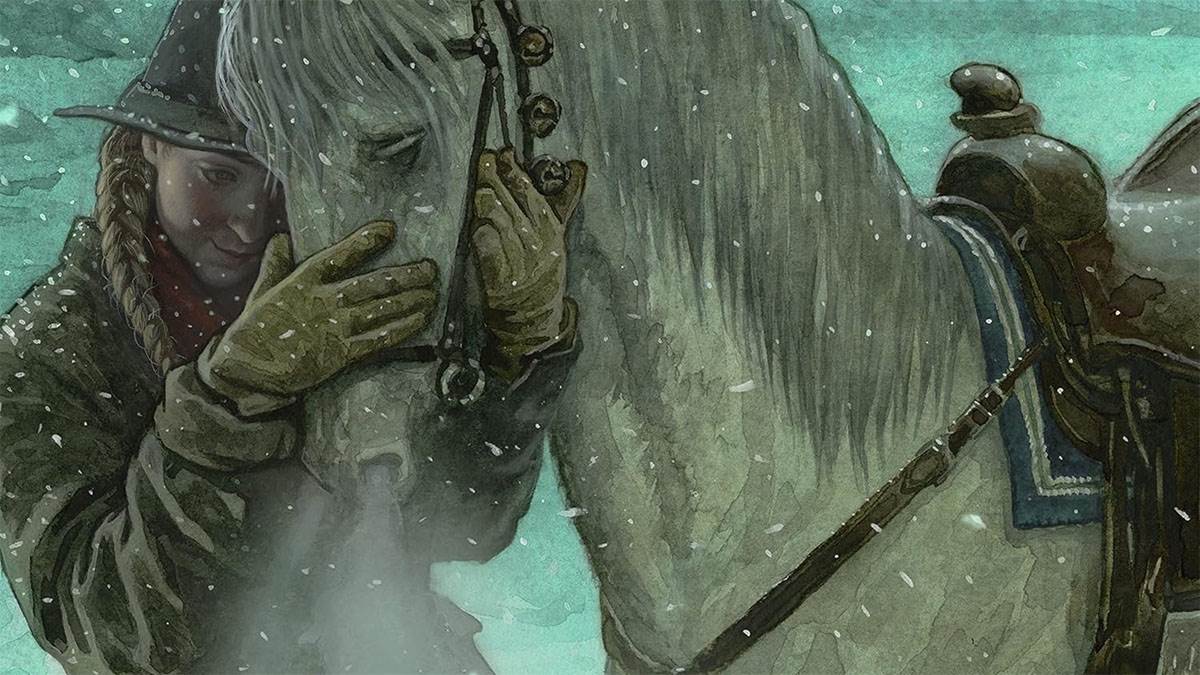Top poetry books to help children celebrate the natural world
Published on: 21 November 2023
Poet and author Nicola Davies shares her favourite poetry books to inspire children to consider nature.

There are so many stunningly beautiful poetry books for children that celebrate the natural world. I would love to have time and shelf space for every single one but as I haven't, here is a small selection. Use it as a starting place for your own discoveries...
And talking of a starting place for discoveries, poetry websites are a great way of finding the poets who speak most effectively to your own heart.
Once you've pinpointed a voice that appeals to you, you can track down a whole collection of their work in a library or a bookshop. Websites allow you to search for poems about specific things (pangolins, damsel flies, aardvarks...)
I really like this US site of the Academy of American poets, poets.org ,where I recently stumbled on this lovely line from 'River Roads' by Carl Sandberg, just right for autumn, as these birds are arriving in flocks for the winter:
Let the redwing streak a line of vermillion on the green wood lines.
The Poetry Society in the UK has a wonderful website for bumbling around in too; I just found this by Peter Wallis from his poem 'Behind The Tree, In Full View Moon Is Hiding Like a Toddler':
Tree is Wearing Moon/Moon is Wearing Tree, Jaunty as a Fascinator
But I am supposed to be talking about books, so...

Illustration: PJ Lynch
I'm going to start with two poets who I began to love when I was young. They've both been dead a long time but their poems remind us that a connection with nature is neither old nor new but eternal.
I can still see the pictures in my head made by Robert Frost's 'Stopping by Woods on a Snowy Evening'. They are uncannily like the illustrations created by P.J. Lynch for the ravishing picture book based on the poem, which make the words accessible to even the youngest children.
They're perhaps not accessible to the youngest readers, but John Clare's poems provide a window for older children into a rural past where abundant wildlife was the norm. It's an inspirational vision that shows what our countryside could be like if we chose to prioritise nature. The slim selection of his work edited by Paul Farley from Faber Nature Poets would slip into any pocket for a country ramble.
Human connection with the natural world is universal, but also intensely personal, as Joseph Coelho's lovely A Year of Nature Poems shows.
Joe's poems capture small, seasonal observations of backyard wildlife, linking them to human experience and emotion, so that the poems create a portrait of a childhood as well as the animals and plants it contained.

Pic: Jackie Morris
Two books that have been busy reconnecting children to nature all over the UK, and now in other parts of the world too, are Jackie Morris and Rob Macfarlane's Lost Words and Lost Spells.
Inspired by the decision of compilers of the Oxford Children's Dictionary to remove nature words from the dictionary, Jackie and Rob set about conjuring these 'lost' species back into imagination with ravishing illustrations and poems that read like spells.
I love a nice fat anthology, where you can meet old friends and discover new favourites.
There are a LOT of nature-themed anthologies for children all worthy of a place on your shelves. I can only mention a few: Tiger Tiger Burning Bright and I Am The Seed That Grew the Tree are both well mixed and beautifully done.
Being a geek, of course I love Wonder: The Natural History Museum Poetry Book because it gives the outstanding mix of poems a little factual context and has illustrations derived from the museum's collections. The National Geographic Book of Nature Poetry is another favourite; it celebrates not only the living parts of the natural world but the non-living: canyons and ocean trenches, mountains and lakes. Unlike many other similar anthologies, it is illustrated with photographs and as a child I would have loved that.

Pic: Britta Teckentrup
For urban children deprived of contact with nature down here on Earth, they have only to look into the night sky to make another kind of connection with a celestial body whose influence on life is huge: the moon.
Dom Conlon's This Rock That Rock is a collection of 50 poems to commemorate 50 years since the first moon landing. As usual, Dom's sharp, original intellect infuses this wide variety of poems with insight, information and humour, and the pairing with Viviane Schwarz's illustrations is perfect.
For readers who want some action with their celebration of nature, Be the Change: Poems to Help You Save the World is the collection to reach for.
It's a collection of three extremely fine and very different poetic voices – Liz Brownlea, Matt Goodfellow and Roger Stevens; there's inspiration, and humour here and a clear call for change. Perhaps the biggest and most profound change we need in our relationship with nature is a re-establishment of respect for the network of life on which we depend. As Roger says in his poem 'Biodiversity':
As we journey on I would suggest
with quiet exactitude
we respect our fellow travellers
Not to would just be rude.
The Star Whale by Nicola Davies, illustrated by Petr Horáček is out now.
Find out about RENEW X BookTrust: The Biodiversity Storytelling Summit 2023
Topics: Poetry/rhyme, Animals, Environment, Nature, Features





